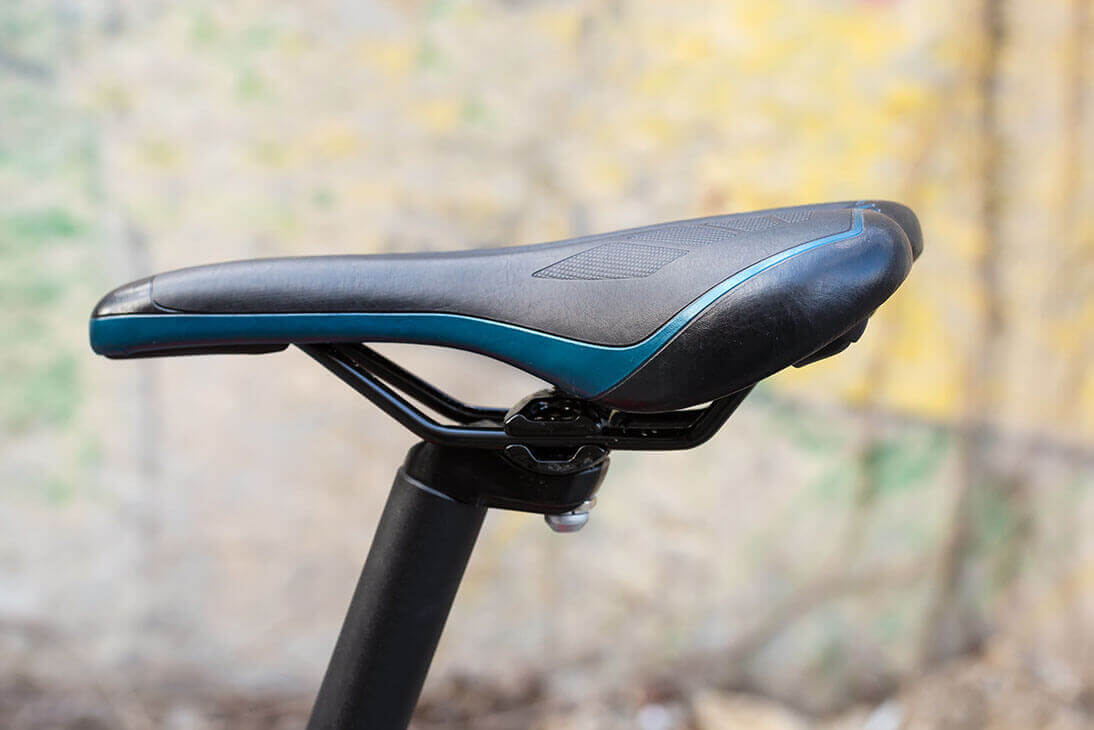When most people think of their bike's critical components or parts, the first thing that comes to mind is their tires or their saddle. But rarely do cyclists pay much attention to their seat post's important role.
Your seat post is one of the most underrated components on any bike, and it can either make your riding experience a pleasant one or one that you'd rather forget. Having your set post set to the correct height can help absorb many annoying bumps out on the road, not to mention it can help reduce the chance of your seat post failing prematurely.
This article will look at some of the most critical factors you need to consider when it comes to everything about your bike seat post.
- What is the standard seat post size?
- Can your seat post be too high?
- How long are seat posts?
- How do you measure your seat tube?
Let's get started!
What Is The Standard Seat Post Size?

For those new to cycling, you might think that bike seat posts come in just one size, but nothing could be further from the truth. Seat posts come in different sizes, lengths, and even shapes; that's right, not all seat posts are tubular.
This is why it's imperative to do your research before looking at changing or purchasing a new seat post; the last thing you want is to waste money on the wrong seat post. Firstly you must assess the diameter of your post because it must correspond with your seat tube to ensure its safety.
There are three standard sizes that you'll find, but by no means are they the only seat post sizes you can purchase.
The main dimensions for bike seat posts are:
- 27.2mm
- 30.9mm
- 31.6 mm
It's critical to note that these are general seat post sizes, and you must check with your manufacturer to find the precise size of your seat post and tube. The three sizes also go by the names of standard, oversize and narrow.
Standard Posts: These seat posts provide the rider with a perfect blend of comfort and durability
Oversize Posts: These posts are generally a lot stiffer than the standard size and don't provide as much comfort, although they are much stronger
Narrow Posts: As the name suggests, these posts are much slimmer than their counterparts and offer riders an incredible amount of comfort, but beware, these posts are easily damaged.
As I said, check the size of your seat post to help ensure you choose the right one. Take the time to think about what's important to you on your rides; is it durability or comfort? or a combination of the two? The answer to these questions will determine the seat post you buy.
Can Your Seat Post Be Too High?
One crucial factor to consider before purchasing is the length of your seat post. A good rule of thumb is that longer seat posts are typically more comfortable, while shorter-length posts are pretty hard on the buttocks.
Further factors contribute to the length and size of your seat posts, such as the type of bike, its geometry, and your body measurements. Regardless, you will have to leave a certain amount of the seat post inside the seat tube; this is called the "leverage ratio."
Be careful not to make the mistake of having your seat post too high because, although unlikely, it is more prone to snapping or fracturing. Thankfully, most brands have a line "etched" into the seat post to indicate the maximum length you can allow for protruding from the tube.
You can "cut down" your seat post, but you need to be an expert in this area to guarantee it's done safely. I would steer clear of cutting down your seat post, especially if you have an expensive carbon fiber seat post.
If you are interested in cutting your seat post, you can watch plenty of good videos on your iPhone Just make sure your iPhone is connected to a compatible iPhone charging case because Youtube is renowned for draining your iPhone battery quicker than you think. iPhone charging cases are an excellent way to make sure your iPhone battery stays topped up.
How Long Are Seat Posts?
Generally, most manufacturers produce bike seat posts ranging from 75mm to 400mm. Shorter-length seat posts will have much less adjustability; however, they are incredibly lightweight. Many cyclists pay little to no attention to their seat posts which I can tell you is a big mistake.
If your seat post is too long, it can negatively affect the aerodynamics of your bike, which is incredibly important to serious road cyclists. Having your seat post too low or too high can negatively impact your riding technique and cause knee, hip, and lower back pain.
I can attest to this, and it wasn't until I consulted with a professional bike fitter did I realize my seat post was too high.
Measuring Your Seat Tube
Measuring your seat post can be confusing, but that's only because there's no universal method in place.
Below are four processes to measure your seat post.
- Find the middle of the bottom bracket; now measure to the point you want the post to protrude and subtract 10mm.
- To locate the "effectual" top tube length, position your bike on a flawlessly level floor and calculate horizontally from the seat tube to the center of the steering axis.
- The next one is tough; many cyclists may not have the identical particulars of the seat post length direct from the factory. One workaround is to utilize a protractor to help discover the proper setback.
- The other is to use a "plumb bob" and thread it through the bottom bracket; score a mark on the top tube. Now calculate horizontally to the frame size point; this measurement will provide you with the post setback.




Leave a comment
This site is protected by hCaptcha and the hCaptcha Privacy Policy and Terms of Service apply.